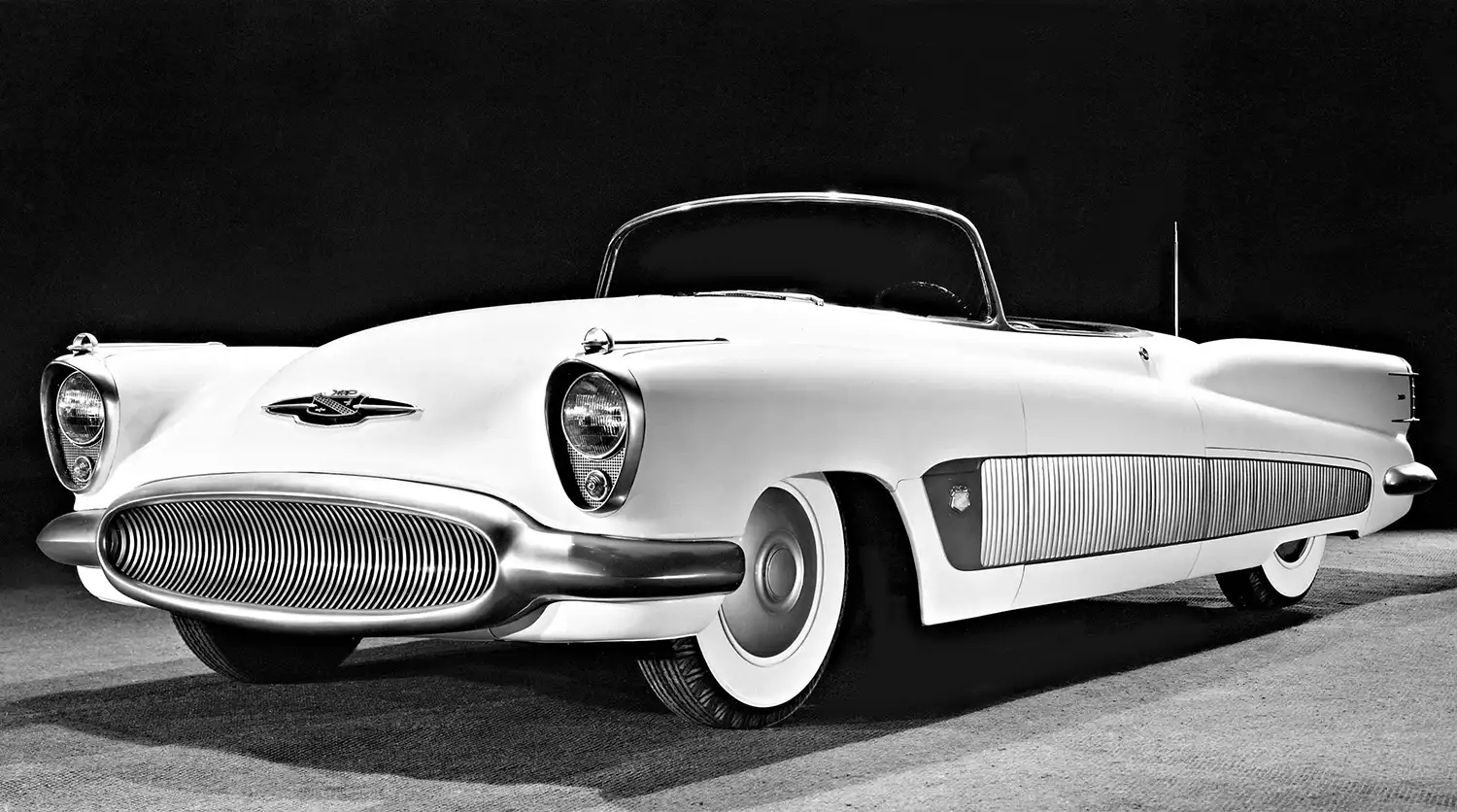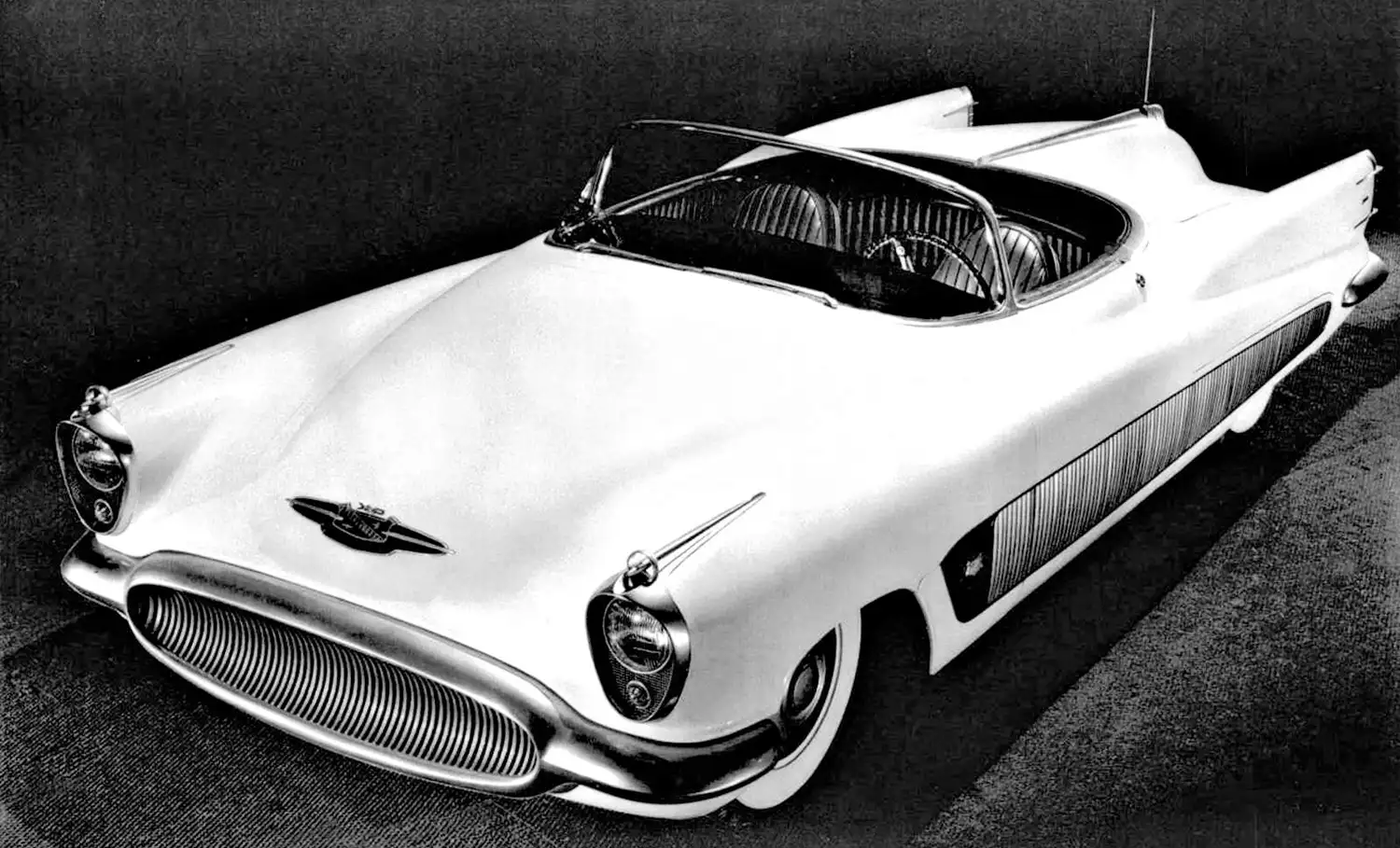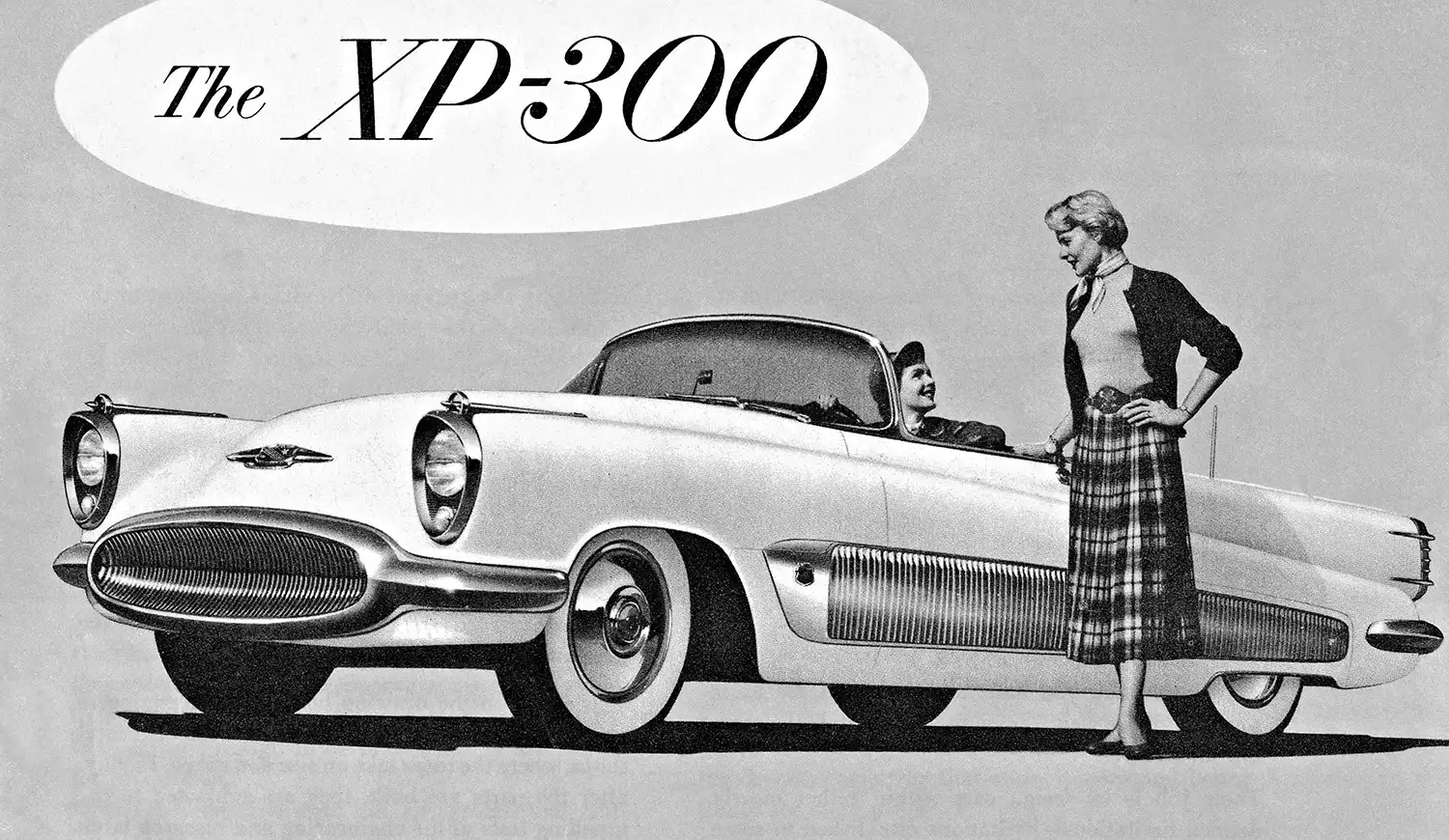
The Buick XP-300, initially known as the XP-9, emerged in 1951 as a pioneering concept car from General Motors (GM). This innovative vehicle was developed alongside GM’s Le Sabre concept, sharing many mechanical components including a powerful supercharged V8 engine capable of running on both gasoline and methanol. The XP-300 epitomizes GM’s “long and low” design philosophy of the 1950s and boasts numerous advanced features such as push-button power windows, hydraulic jacks, and de Dion axles.
The XP-300, with a top speed claim of 140 mph, debuted at auto shows across the United States, including the Chicago Auto Show in February 1951 and GM’s 1953 Motorama tour. Designed by GM’s vice president of engineering, Charles Chayne, and Ned F. Nickles, the XP-300 reflects Chayne’s vision for the future of Buick production cars, contrasting with the more futuristic Le Sabre. The XP-300’s name signifies its experimental nature (XP) and its over 300 horsepower (220 kW) output.
This concept car features a sleek wraparound windshield, three tailfins, and a grille reminiscent of an electric razor. Its design incorporates a combination of aluminum body panels, contributing to a total weight of 3,125 pounds. Notably, the XP-300 includes a hydraulic system that operates various components such as the cowl vents, door-locking devices, and seats, highlighting its advanced engineering.

The XP-300’s interior is equally impressive, featuring pleated blue-leather bucket seats with adjustable air bladders, a telescoping steering wheel, and a center console with an integrated speedometer/tachometer. Safety features, including dual brakes and adjustable seats, were also ahead of their time.
Powering the XP-300 is a supercharged V8 engine made of aluminum, producing 335 horsepower and weighing just 550 pounds. This engine is paired with a custom Dynaflow automatic transmission and can run on either gasoline or methanol, utilizing a dual-carburetor system. The XP-300 achieved impressive performance metrics for its era, with a top speed of 140 mph during testing.
Although it had less influence on future car designs compared to the Le Sabre, the XP-300 still left its mark. It inspired the design of the front and upper quarter panels of 1953 and 1954 Buicks and influenced the headlight styling and wraparound windshield of the 1954 Buick lineup. The XP-300, refurbished in 1966, now resides at the Alfred P. Sloan Museum in Flint, Michigan, where it continues to be a testament to GM’s innovative spirit.
The Buick XP-300 remains an iconic example of how concept cars can push the boundaries of automotive design and engineering, blending futuristic technology with classic styling to create a timeless piece of automotive history.
